|
Tourism |
| Portugal > Tourism > Plains > Accommodation | |
| From the peaceful landscape of the vast Ribatejo open plains to the extense golden Alentejo wheat fields, the peaceful landscape is but a curtain that opens on to an unimaginable heritage. Accommodation | Sightseeing Guided Tours | Places of interest | Regional gastronomy | Festivities | Handicrafts | |
|
One is first taken by surprise by the remarkable traces of successive cultures: dolmens and cromlechs, Roman and Arab vestiges mingling with the most recent sign of Christianity of which the numerous medieval castles are but one example. The north-western part of` the region, located on the banks of the Tagus and dominated by Santarém, consists of fertile grasslands, where the finest bulls and horses roam peacefully. To the north-east are the beautiful villages and towns which make-up the so-called Rota dos Castelos (Castle route): Nisa, Castelo de Vide, Marvão, Portalegre and Alter do Chão. |
| Further south, the landscape becomes warmer and flatter; around Évora (one of the most beautiful towns in Portugal), are Monsaraz, Vila Viçosa, Estremoz, and Arraiolos (renowned for its hand-made tapestries, based on traditional drawings from the 17th and 18th centuries). |
|
Driving on to the south, the vast plains become less inhabited and sunnier, the only shade being provided by the olive trees and oak trees and the only amenity being provided by refreshing dams. A trip to Alvito, Beja, Serpa and Mértola will be worth your time. The coastline to the south-west offers the visitor magnificent Atlantic beaches. As the region with the highest thermal amplitude (going down to 5ºC or up to 33ºC), Planícies are a dispersely populated region with quite open horizons, where the rhythm of life follows the idle sound of regional songs. |
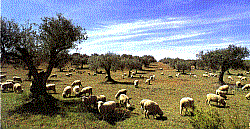 Typical landscape of the region |
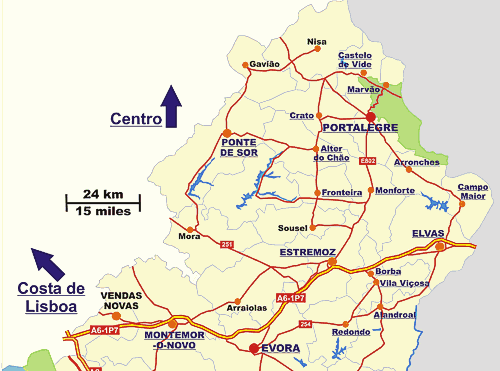
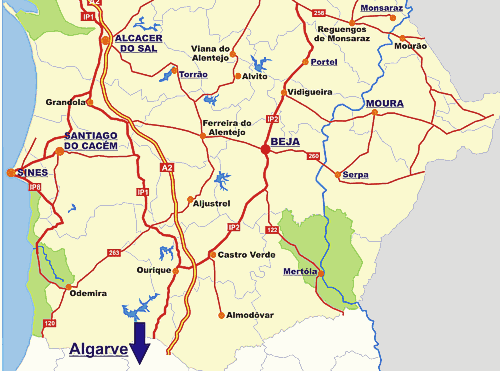
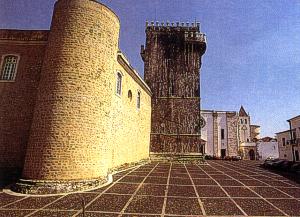


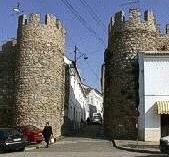
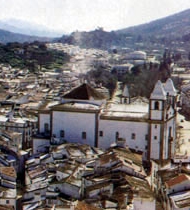
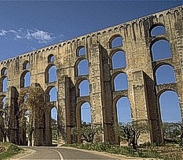
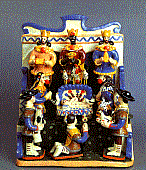
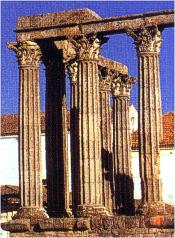
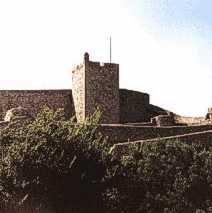
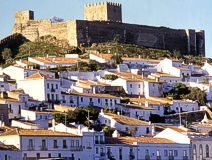
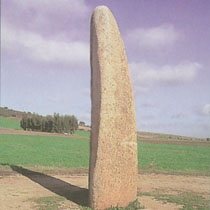
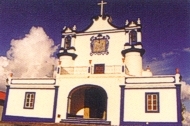
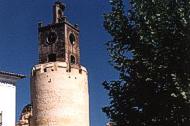
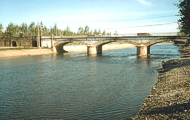
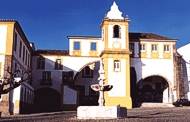
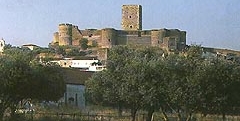

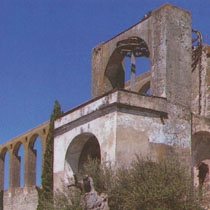
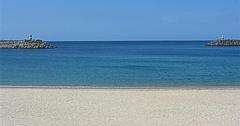
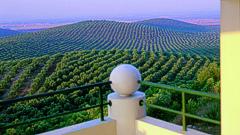
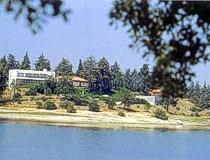

 Arraiolos,
or the kid stews, the hare with the red beans and the fried rabbit with
Alentejo olive oil. Do try the delicious regional bread, that you can
add to the sheep cheeses from Serpa, Nisa of from Évora or the
Alandroal goat cheese. In this region you will also find an enormous
variety of cakes and pastries, such as the "celestes" from
Santarém, the "palha" from Abrantes, the
"imperial" cakes from Almeirim, those
from Évora baked with eggs and almond paste, and the convent
pastries from Portalegre and from Beja. Do not forget the fruit: the
melon from Almeirim and from Alpiarça are rightly famous. Try
also the Cartaxo wines and those from Almeirim, Borba, Reguengos and
Vidígueira.
Arraiolos,
or the kid stews, the hare with the red beans and the fried rabbit with
Alentejo olive oil. Do try the delicious regional bread, that you can
add to the sheep cheeses from Serpa, Nisa of from Évora or the
Alandroal goat cheese. In this region you will also find an enormous
variety of cakes and pastries, such as the "celestes" from
Santarém, the "palha" from Abrantes, the
"imperial" cakes from Almeirim, those
from Évora baked with eggs and almond paste, and the convent
pastries from Portalegre and from Beja. Do not forget the fruit: the
melon from Almeirim and from Alpiarça are rightly famous. Try
also the Cartaxo wines and those from Almeirim, Borba, Reguengos and
Vidígueira.